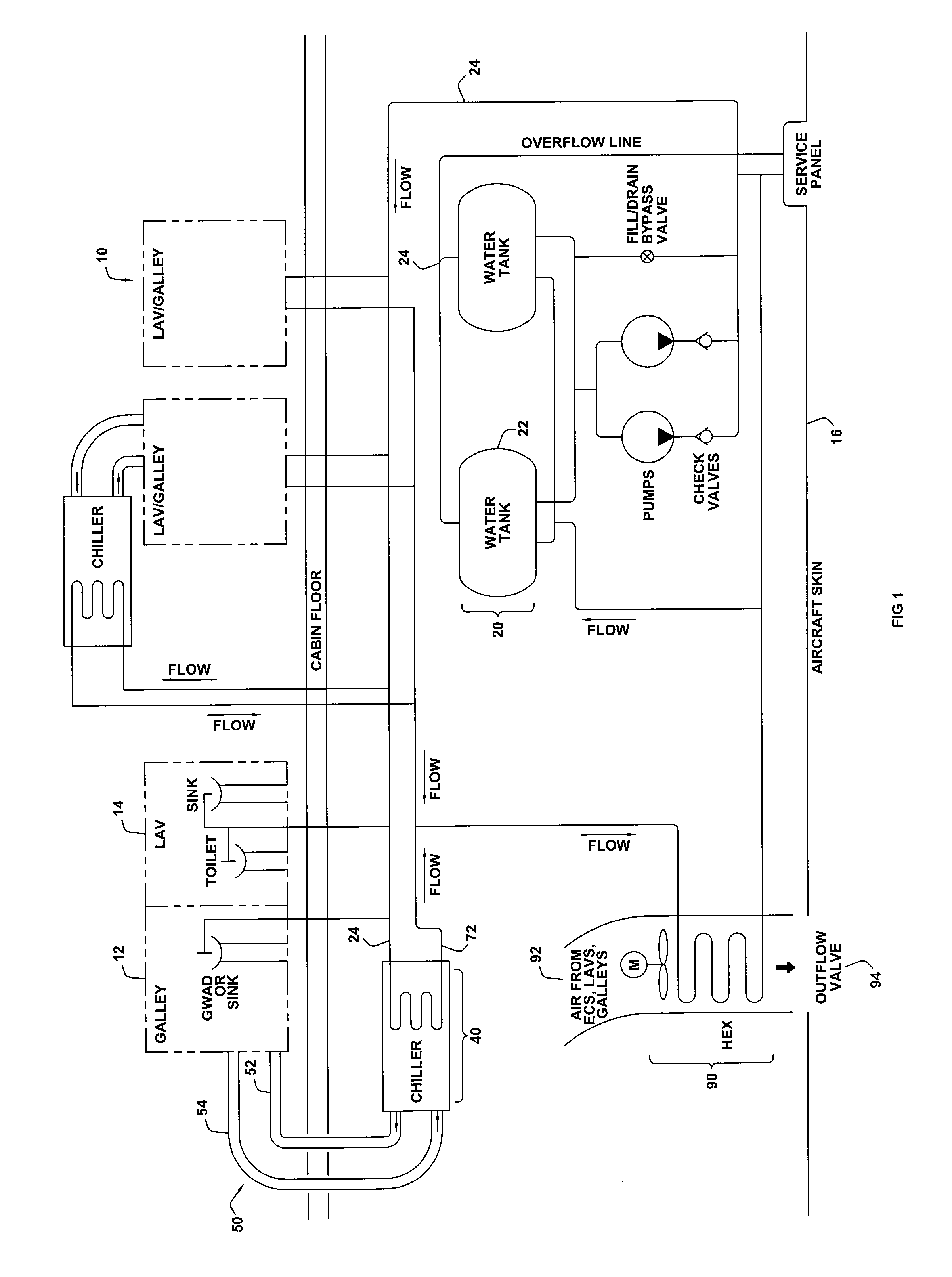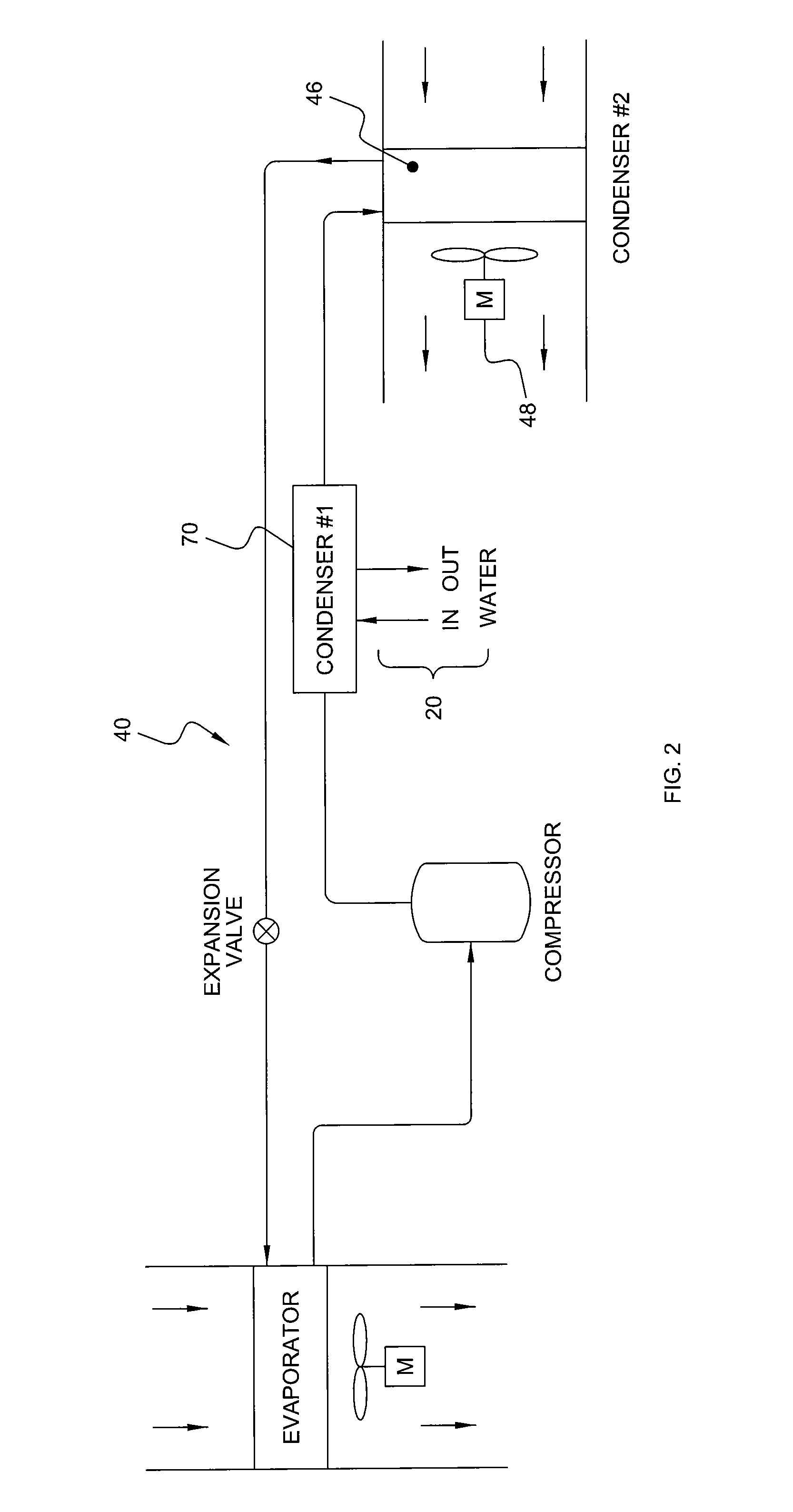Galley cooling heat sink through water system
a heat sink and gallon technology, applied in the direction of transportation and packaging, lighting and heating equipment, energy-saving board measures, etc., can solve the problems of noise and heat dissipation, heat removed from the cooling compartment of the refrigerator is expelled directly to air, and space and weight limitations need to be considered, so as to achieve the effect of more efficient heat transportation
- Summary
- Abstract
- Description
- Claims
- Application Information
AI Technical Summary
Problems solved by technology
Method used
Image
Examples
Embodiment Construction
[0039] Embodiments of the present invention relate to systems and methods for cooling various compartments, systems, and devices of transport vehicles. For example, food products to be served to passengers onboard aircraft are traditionally kept cool in compartments through chilled recirculated air. Other devices, such as electronics, avionics, or other systems that generate heat, may also need to be cooled. For ease of reference, this invention will be described with respect to aircraft galley refrigeration systems for cooling food products in food carts or compartments, but it should be understood that it is equally applicable to other transport vehicles, such as large passenger buses, watercraft, etc., and may be used to cool systems other than food compartments, such as power electronic units, avionics, in-flight entertainment units, and any other heat-generating equipment that may need to be cooled.
[0040] The designs described in this application generally use a potable water ...
PUM
 Login to View More
Login to View More Abstract
Description
Claims
Application Information
 Login to View More
Login to View More - R&D
- Intellectual Property
- Life Sciences
- Materials
- Tech Scout
- Unparalleled Data Quality
- Higher Quality Content
- 60% Fewer Hallucinations
Browse by: Latest US Patents, China's latest patents, Technical Efficacy Thesaurus, Application Domain, Technology Topic, Popular Technical Reports.
© 2025 PatSnap. All rights reserved.Legal|Privacy policy|Modern Slavery Act Transparency Statement|Sitemap|About US| Contact US: help@patsnap.com



